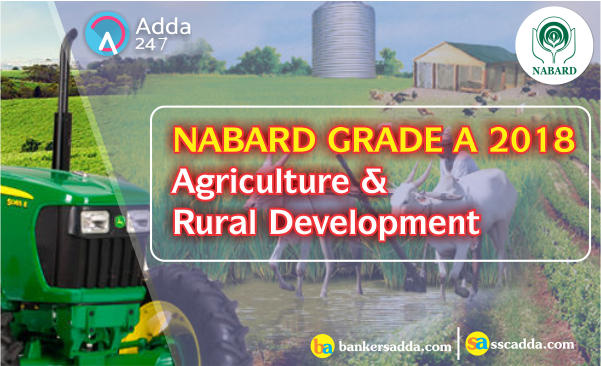The upcoming important exams are NABARD grade A and grade B, in which there is a section Agriculture & Rural Development (with a focus on Rural India) having high weightage of 40 marks. So, for the same, it becomes really important to have an in-depth knowledge of the various terminologies and practices involved in agriculture. Further its imperative to be aware of the present scenario of Indian Agriculture and the state of Rural Development in India. To help you with this, today, we are providing you with all necessary information related to the mentioned field which will help you to fetch some good marks.
What is Agriculture?
The term agriculture is derived from the Latin words “ager” or “agri” meaning “soil” and ‘cultra’ meaning ‘cultivation’
Agriculture is a very broad term which includes all aspects of crop production, livestock farming, fisheries, forestry etc.
It is the cultivation of lands for production of crops for a regular supply of food and other needs for progress of the nation.
Agriculture means the cultivation of the soil. But in reality agriculture is NOT confined in soil cultivation alone; it includes all aspects of crop production, livestock farming, fisheries forestry etc.
“Agriculture is the science and art of farming including the work of cultivating the soil, producing crops, planting forest plants/trees, raising livestock and rearing fishes.”
Note: Agronomy is a branch of agricultural science which deals with principles and practices of soil, water and crop management. It deals with methods which provide favourable environment to the crop for higher productivity.
Spheres of agriculture
The Greek “geoponic” (cultivation in earth), “hydroponic”(Cultivation in water) and “aeroponic” (cultivation in air) refer to the three main spheres of agriculture.
Branches of Agriculture
It is composed of five specialized branches which are as follows:
a) Agronomy which deals with soil management and the growing of crops.
b) Horticulture which deals with the cultivation of fruits, vegetables, and ornamental crops.
c) Agricultural Engineering which involves knowledge of farm machines and equipment. It also deals with developing new systems and practices to address problems facing agriculture.
d) Agricultural Economics which deals with the business end of farming.
e) Animal Science which is basically the breeding and caring of animal for specific purposes, such as for their meat, milk and/or fur.
Agronomy is most important branches of Agriculture.
The term Agronomy is derived from the Greek words “agros” meaning “Field” and “nomos” meaning “to manage.”
So, Agronomy is a branch of agricultural science which deals with principles and practices of soil, water and crop management.
It can also be defined as a branch of agricultural science that deals with methods which provide a favorable environment to the crop for higher productivity.
It is considered as the mother or primary branch of agriculture. Like agriculture, it is nothing but an integrated and applied aspect of different disciplines of pure sciences.
The nature of agronomy is based on soil-plant- environment relationship.
It has three distinct branches:
a) Crop Science (mainly field crops)
b) Soil science
c) Environmental Science ( that deals with applied aspects)
What is the scope of Agronomy?
Agronomy is a dynamic discipline. It can lead to the following things:
Yield maximization with introduction of new cultivars/ HYVs
Reduced cost of production due to proper crop management
Better water use efficiency due to agronomic knowledge
Special tillage and intercultural operations for better crop growth and maximizing harvesting index
Appropriate soil fertility management can increase crop yields with lesser use of fertilizer for increased profit
Reduced post harvest loss due to agronomic knowledge and practices






